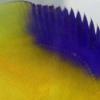-
Topics
-
Latest Update
-
0
Papilo99 - Situs Judi Slot Online Terkenal Dengan Trick Modal Receh Saat Ini
DAFTAR Papilo99 SEKARANG ! SEARCH GOOGLE >>> “ Papilo99 ” Temukan pengalaman bermain di Papilo99 program permainan judi slot online terkenal dengan trick jitu modal receh saat ini! Kami adalah tujuan utama bagi pecinta game online yang mencari kombinasi sempurna antara keseruan, keamanan, dan peluang kemenangan yang maksimal. Dengan reputasi yang telah terbukti, kami berkomitmen untuk menyediakan pengalaman bermain game online terbaik di industri Adalah kesempatan baru untuk menang besar. Kami mengundang Anda untukuntuk bergabung dengan komunitas pemain kami dan mengalami sendiri mengapa kami diakui sebagai program permainan judi slot online terkenal dengan trick jitu modal receh. Pilihan Transaksi : ALL BANK E-MONEY (Dana/Ovo/Gopay/LinkAja) Pulsa TELKOMSEL & XL Semua Deposit Tanpa POTONGAN -
0
Kisetoto Link Resmi Situs Judi Slot Online Gacor Terupdate dan Terlengkap 2024
Selamat datang di situs judi slot online gacor terbaru tahun 2024, Kisetoto, yang kini telah menjadi salah satu situs judi slot online terpercaya dan terbaik dengan banyak game slot terlengkap yang bisa Anda nikmati. Berbagai promo menarik dan pelayanan terbaik juga akan Anda rasakan ketika bergabung di situs Kisetoto. Sebagai ucapan terima kasih dan guna meningkatkan profit anda dari judi online, Kisetoto sengaja menghadirkan berbagai promo dan bonus. Seperti apa saja bentuknya? Inilah sejumlah bonus dan promo yang sedang berlangsung : - Bonus New Member Bonus 100 di Awal - Bonus Harian 50% - Bonus 10% Deposit Pulsa Tanpa Potongan - Bonus Mingguan 0,7 % - Bonus Absensi - Bonus New Member All Games 20% - Bonus Refferal 1% Yang disebutkan di atas belum semuanya loh. Update informasi bonus dan promo kami di laman Promosi. Jangan lupa juga baca syarat dan ketentuannya agar bisa -
0
Kodomo99 Situs Slot Gacor Deposit BANK OVO Online 24 Jam Gampang Maxwin
Kodomo99 Situs Slot Gacor Deposit BANK OVO Merupakan Situs Slot Yang Menyediakan Deposit Melalui BANK OVO Online 24/7Jam Untuk Memudah Para Pemain Sloter Lebih Mudah Dalam Melakukan Transaksi Tanpa Harus Bolak Balik Ke ATM Bank Lagi. Kodomo99 Situs Slot Gacor Depsoit BANK OVO 24/7 Jam Tanpa Offline Sudah Berlisensi Resmi PAGCOR Dan Semua Member di Kodomo99 Menggunakan BANK OVO untuk Melakukan Transaksi Setoran , Penarikan , dan Juga Registrasi Sangat Simple dan Cepat. LAYANAN DAFTAR KODOMO99 !!! Search di Google >> " Kodomo99 " Atau Kunjungi >> LINK TOMBOL DAFTAR DISINI << Tentunya Kodomo99 Situs Slot Gacor Deposit BANK OVO Juga Menyediakan Berbagai Jenis E-Wallet Lokal Untuk Registrasi, Deposit, Penarikan, Melalui E-Wallet KWPAY, GOPAY, LINK AJA, QRISS , SAKUKU, OCTO GO MOBILE. Anggota Kodomo99 Yang Melakukan Setoran, Bergabung, Penarikan, dan Bermain Game Slot Online Dengan E-Wallet Yang Terdaftar Memiliki Fitur Khusus dan Gampang untuk maxwin/jackpot. -
-
2
Abortion pills in Kuwait(+96567069311)&get cytotic
Order online Abortion Pill for first trimester termination of pregnancy. This pregnancy termination pill is easily and safely utilized without undergoing a surgical abortion procedure at home. It is used all over the world above 70% of women without any side effects.
-










Recommended Posts
Join the conversation
You can post now and register later. If you have an account, sign in now to post with your account.